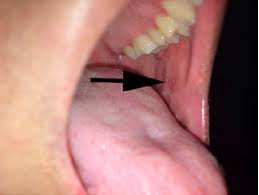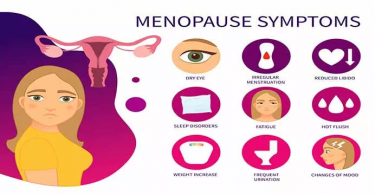INTRODUCTION
Renal calculi (kidney stones, nephrolithiasis, kidney calculi, renal stones)is a
condition in which one or more stones are present in the pelvis or calyces of
the kidney or in the ureter.
Urinary calculi are a common affliction of human population with
variety of geographical variation. Anthropological history provided evidence that
urinary calculi existed before 5000 BC and perhaps more.
DEFINITION:-
Renal calculi(kidney stones, nephrolithiasis, kidney calculi, renal stones)is a
condition in which one or more stones are present in the pelvis or calyces of the
kidney or in the ureter.
Miasmatic Relationship to Pathophysiology:-
Psoric Symptoms:
1. Nephritis, pyelitis, cystitis and urethritis are Psoric in origin because of therir
infective nature (as all inflammation begins with psora).
2. Psoric patients, especially those advancing age, experience a sensation of fullness
in the bladder. There may also. be a feeling of constriction
3. Smarting and burning in the urinary meatus or in the lumbar area unrelated to any
pathological causes might be present.
4. Modalities: Psora experiences agg from cold and amel from natural discharges
such as urination.
5. Concomitants: Psoric urinary problems may be associated with anxiety,
apprehension and fear of incurable diseases.
6. Flow: Psoric pts suffer from stress incontinence. The urine passes involuntarily
and frequently, when sneezing, coughing or laughing.
7. There may be burning and smarting resulting from acidic urine.
8. Kidneys: Fibrous changes in the kidneys are Psoric in origin pain in kidney with
inflammation of functional origin, nephritis, pyelitis, cystitis and urethritis
9. Enuresis: In psora, enuresis occurs especially in children as a result of anxiety and
fear (particularly a fear of going to school), or from other functional causes.
10. Urine: Psoric urine is generally dark but can also be yellowish or brownish.
Sycotic Symptoms:
1. Sycotic also has renal dropsy, renal calculi and calculus deposits in other parts of
the genito-urinary tract.
2. Calculi, complications of the genito-urinary tract and various pains of the urinary
tract are generally Sycotic in manifestation.
3. Stitching and pulsating sensations with wandering pains are Sycotic.
4. Modalities: Sycotic urinary symptoms ate agg in damp, rainy weather and from
the changes of the season.
5. Flow: In sycosis, micturition is painful. There may be contraction of the urethra,
and children will scream while urinating.
6. Scanty urination (psora is mainly responsible for scanty discharges/excretions),
but during the rainy season polyuria is a characteristic of this miasm.
7. Urinary cramps and painful spasms affecting the urethra and bladder may be
present in sycosis.
8. Sycotic pts suffer from renal calculi with pains, which are stitching and
wondering in character.
9. Urine: A yellow color represents sycosis.
10. Sycosis urine may have fish brine odour.
Syphilitic Symptoms:
1. All advanced conditions of the kidney and genito-urinary tract, with pyogenic
inflammations can be associated with structural and pathological changes, and are
therefore syphilitic in origin.
2. Burning and bursting sensation in the bladder or loin area are syphilitic.
3. Modalities: All syphilitic symptoms are agg at night, in summer, and from
Warmth.
4. Most urinary complications are o Sycotic origin, but when in combination with
Syphilis the result is diminished flow,and frequent desire for micturition with
Burning and irritation during flow.
5. Irritation and burning of the parts, wherever the urine touches, indicates the
Acridity of this miasm.
6. Fibrous changes with destructive manifestations in kidneys.
7. Urine: Red, the color of destruction, represents syphilis. Red colored urine with
Streaks of pus is characteristic.
Tubercular Symptoms:
1. Haematuria: The tubercular miasm is responsible for the production of
Haematuria resulting from different types pathological manifestations of KUB
(kidney, ureter and bladder).
2. A tickling sensation in the urethra is characteristic of the tubercular miasm.
3. Modalities: Tubercular urinary manifestations agg at night and amel in the open
air.
4. Concomitants: Restlessness, anxiety and weakness after micturition occur in the
tubercular miasm.
5. The tubercular miasm is responsible for involuntary urination in children.
Nocturnal enuresis in children should therefore undergo anti- tubercular treatment.
6. In the tubercular miasm there may be recurrent, intermittent and periodic renal
Spasm with bleeding (Haematuria), often noticed particularly during the new and
full moon.
7. Albuminuria, and urine loaded with phosphate, sugar or protein are tubercular.
8. Urine: Tubercular urine is pale, colourless and copious. An offensive, musty and
putrid, even carrion like odour may be present. Haematuria occurs during sleep.
HOMOEOPATHIC MEDICINES FOR RENAL CALCULI :-
Berberis Vul:
Head remedy for renal colic, specially when the pain is on the left side and extends from kidney to urethra, with urging to urinate. With similar symptoms it also cures pain on the right side.
Ocimum Can:
Agonising and twisting pain which makes the patient scream and groan : red urine with brick dust or white sediments. Urine turbid, red and bloody.
Lycopodium:
In chronic cases when the acute pain is over; there is flatulence in abdomen, specially right side with red sand in urine.
Chininum Sulph:
When there is brick dust or straw-yellow deposits in urine.
Sarsaparilla:
For white sediments. Urine becomes turbid like clay water immediately after passing. Much pain at the end of urinating. Urine scanty, slimy and flaky. Tenesmus of bladder.
Calcarea Carb:
Renal colic when formation of stone is due to uric acid.
Dioscorea:
Writhing with dry and crampy pains with passing of renal calculus. Spasmodic stricture of urethra with pain about navel, relieved by pressure.
Cantharis:
Inflammation of kidney, bladder and urethra. Sharp tearing and incisive pain in kidney. Difficult emission of urine; emission of blood drop by drop.
Hydrangea Arbores:
Stone breaking remedy. Dribbling of bloody urine. White amorphous salts deposit in urine.





